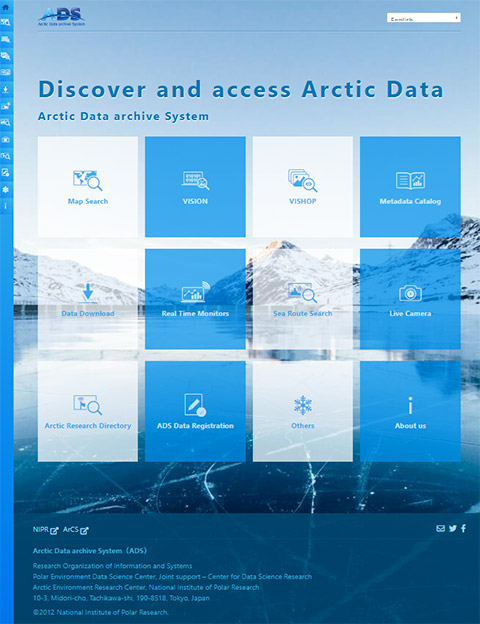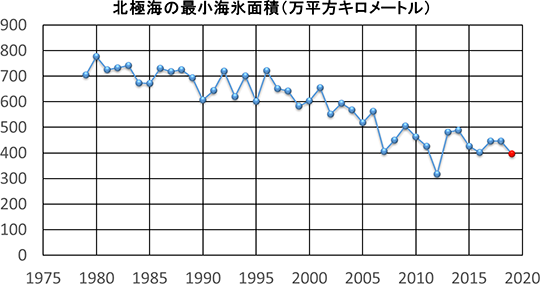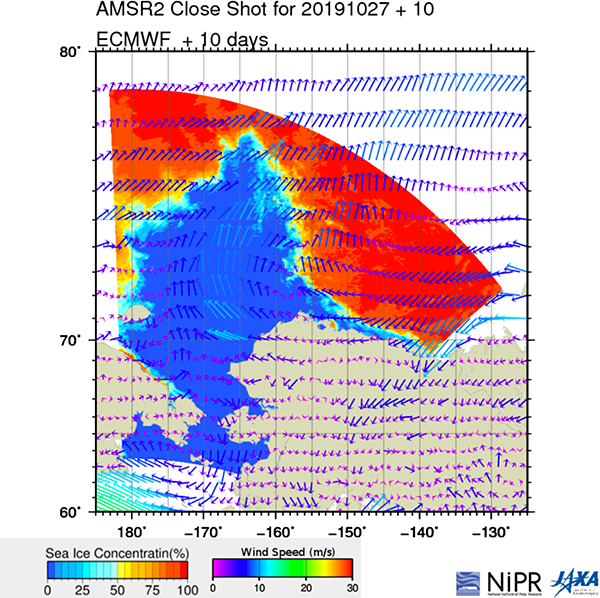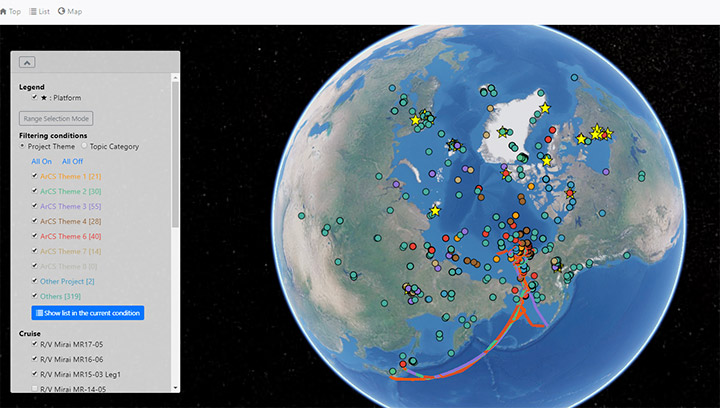Theme 8
Arctic Data archive System (ADS)
Map search of the arDirectory
While this theme served as a data center for the projects, we were also engaged in developing a data analysis platform that facilitates interdisciplinary joint research programs, as well as an information delivery service utilizing model outputs from the observation data on the Arctic Ocean.
As the data center, we collected data from various researches and observations conducted in each theme as well as from models and assimilation studies, and registered them in the ADS for public disclosure. At the same time, these data and other research information were comprehensively registered in, and are now openly available on, the Arctic Research Directory (arDirectory). The data retrieval system, KIWA, also allows for easy access to such data. ADS also serves as a data archive that registers and releases most real data acquired from the projects, and assigned a digital object identifier (DOI) to the data as necessary to facilitate data disclosure.

Website of the Arctic Data archive System (ADS)
A major functional enhancement was also made to the online visualization application, VISION, in order to promote building the platform that performs an online visualization and analysis of satellite data, model calculation results, and other 2-D grid data, as well as of time-series data, etc., acquired from the Automatic Weather Stations (AWS) and other equipment in Greenland, etc. Furthermore, VISHOP, a quasi-real-time monitoring system for the polar region environment, was also functionally improved, and the Arctic sea-ice forecast was made available to the public as well.

Change of the minimum Arctic sea ice extent over the years (million square kilometers)
As an IoT (Internet of Things) based technological development utilizing small devices, we enhanced the functionality of VENUS, a navigation support service, so that sea-ice concentration and other customized data can be delivered and data can be visualized on ships. Especially, in the R/V Mirai Arctic Cruise held in the in the latter half of the project, Mirai was provided with various information including detailed sea-ice forecast information that was calculated by feeding the climate forecast data from the European Centre for Medium-Range Weather Forecasts (ECMWF) to the Sea-Ice and Ocean Coupled Model (IcePOM) of the University of Tokyo. This attempt was carried out in conjunction with Theme 1 as a trial operation for social implementation of the system of supporting safe Arctic cruises.

Operation image of VENUS
Research background and overview
Please see here.
Research achievements
Please see here.





